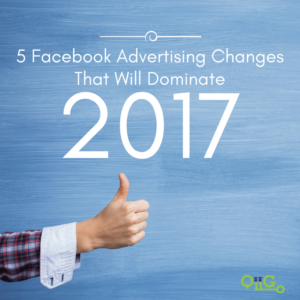Coordinating different digital marketing channels can sometimes feel a little like spinning plates. There are so many different variables to keep track of that it’s tough getting different channels in sync. And with the digital landscape’s rapid rate of innovation and change, it takes care and attention to keep your campaigns relevant.
One area that many brands struggle with is creating a coordinated PPC and social media marketing campaign. The benefits of coordinating these two channels is clear. Social media campaigns are an excellent way to grow awareness and develop strong prospects. Meanwhile, PPC is the perfect channel for closing the deal once those prospects are in place.
To overcome the challenges of coordinating these two digital marketing channels, brands should keep the following tips in mind when combining their PPC and social media marketing efforts.
Map Out a Cohesive Story
When you’re creating a campaign that runs across multiple channels, a cohesive voice is key. That means understanding the beginning, middle, and end of your target’s path to conversion, then tailoring your campaign to fit that journey. This means understanding your target’s mindset as they take that journey, then tailoring your content in a way that appeals to your target at each step of the process.
Two excellent tools when crafting your story are search data and Facebook’s Audience Insights. Analyzing search data around key terms can help you keep your ads relevant to users. If you run a shoe store and find that your market is increasingly searching for a specific type of shoe, like “walking shoes,” you can tailor your campaign across both channel in response. Meanwhile, Audience Insights from Facebook make it easy to tailor a story to your target audience, with details on age, gender, location, and purchasing behavior.
Use Each Channel’s Strengths
Social media marketing and PPC marketing each have their strengths and weaknesses, and each is generally suited to a specific role in a cross-channel campaign.
Typically, Facebook works well as a prospect-generation channel and a recapture channel for existing customers. Facebook users aren’t typically active purchasers, so the network is an excellent way to build brand awareness and interrupt Newsfeed browsing with offers that appeal to users based on their interests, location, or browsing history. This makes Facebook ads — or even boosted posts — an excellent way to introduce customers to your brand, recapture customers who have recently visited your site, or provide past customers with new, relevant offers.
On the other hand, PPC works best as a targeted channel. Paid search is tailored to the specific search behavior of users, allowing you to target users in the middle of a purchase-related query. This makes it perfect for later stages of your campaign, when your funnel has started to narrow. PPC is a powerful tool for capturing users who are searching for specific products, services, or brand terms they encountered on Facebook.
Use Built-In Tools for Narrow Targeting
Both Google and Facebook offer robust tools for targeting users through paid ads. On Facebook, you can use the Custom Audiences feature to narrow down who sees your promoted posts and ads. On Google, the Customer Match feature makes it possible to specifically target users based on data and parameters that you provide. You can also use tools like Facebook’s Store Visits objective and Google’s Local Inventory Ads to ensure the format and content of your campaign is both cohesive and highly relevant to the specific users you are targeting.
The importance of narrow targeting cannot be understated when it comes to cross-channel campaigns. These campaigns are targeted at a specific customer journey, which narrows the spectrum of users that your campaign will resonate with. So be sure that those users are the ones who are seeing your campaign.
Customize Campaign Measurement
Multi-channel campaigns are notoriously tricky to measure for a couple of reasons. First, different channels rely on different metrics and conventions for measuring campaign success. Second, the more variables you add to a purchase journey, the more difficult it becomes to measure the relative strengths and weaknesses of these variables.
To minimize these issues, use a multi-channel attribution model when measuring your campaign’s metrics in tools like Google Analytics. You should also resist the urge to compare apples to oranges on multi-channel campaigns. When analyzing granular stats, don’t just measure channels against one another. Instead, compare data from each channel with historical data from past campaigns. This will allow you to contextualize performance, measuring Facebook data against Facebook data and AdWords data against AdWords data.
Improve the performance of your cross-channel campaigns with Qiigo. Our digital marketing experts will help your brand tell a cohesive story across PPC and social media marketing, making you more relevant than ever to your target audience. Call (888) 673-1212 today to learn how we can help.



